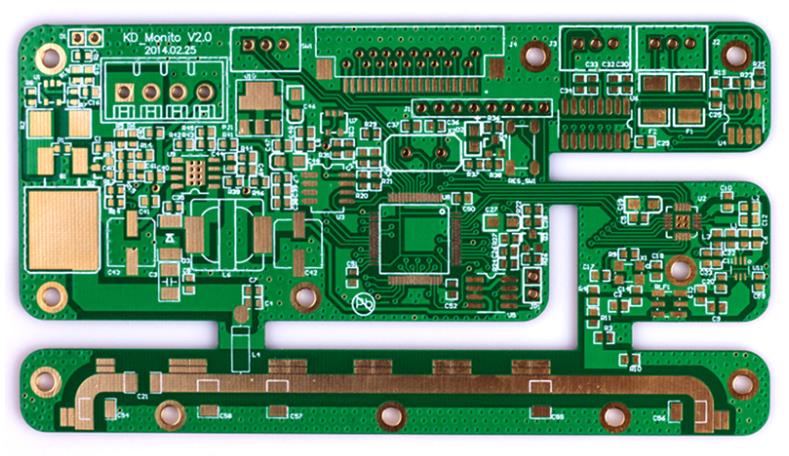In low-speed PCB board where the concept of network is widely used on high-speed circuit PCBs, "ground" is also popular, and "ground" itself is a network. In a low-speed circuit, the reason why you don't need to consider the return path of the signal is that all currents will be merged into the infinite container of "ground", and at the same time, the "ground" is an equipotential body, so you don't care about the current flow in it. This is a wrong view. At high frequencies, the loop inductances of the signal path and the return path need to be reduced. Then, the return current is close to the signal current. As long as the nearby conductors allow, the return path will be distributed as close to the signal path as possible. If there are no conductors around to provide a return path, then free space becomes the return path, which creates EMC problems.

One of the two conductors of the parallel two-conductor transmission line is the signal path and the other is the return path, and there is no strict distinction between the two; the inner conductor of the coaxial cable is the signal path, and the outer conductor is the return path; the coplanar stripline One conductor is the signal path and the other is the return path; the middle conductor of the coplanar waveguide is the signal path, and the metal planes on both sides are the return path; the narrow conductors of the microstrip line and stripline are the signal path, and the metal plane near the conductor is the return path path. Readers can experience the impact of 'opening a slot in the outer conductor of the coaxial cable' to high-speed signal transmission. Therefore, in the process of designing high-speed circuits, the concept of "ground" should be discarded and the return path should be treated like the signal path.
Parallel twin conductors and coaxial cables cannot be used on high-speed PCBs. When designing low-speed circuits, the operation of "grounding" is often performed after the wiring is completed. The transmission line formed by "covering the ground" is a coplanar waveguide. As mentioned in Chapter 3, crosstalk occurs when two traces are close together, that is, one trace A uses the other trace B as a return path, forming a coplanar stripline, which is not Hope to see, because trace B was not intentionally designed as a return path. The basic measure to avoid this kind of crosstalk is to use a "large metal plane" as close to the trace as possible. Compared to another narrow trace B, this "large metal plane" is a better return path, which forms Microstrip and stripline on the PCB. And this "large metal plane" is the mirror layer, also known as the "reference plane", which is usually assigned to power and ground on the PCB.
The reliable return path should be parallel and close to the signal path. Only in this way, the magnetic field lines generated by the signal path and the return path will cancel each other, because the two directions are opposite, which is the principle of magnetic flux. The magnetic flux generated by the loop is also relatively small. It produces less radiation to the surroundings. There is also less crosstalk on other surrounding signal lines. A bad design is one where the return path is broken, or even not providing a return path for the signal path at all; and a simple design is the use of a reference plane (mirror layer) as mentioned above. Of course there are some other ways to achieve fluxing, such as:
1) Ensure that the multilayer board has the correct stack-up settings and impedance control;
2) For multi-layer boards, arrange high-speed traces near the ground plane or ground grid, and configure ground traces or grounding for single and double panels;
3) Capture the magnetic flux generated inside the component package into the 0V reference system to reduce the internal radiation of the component;
4) Reduce the noise voltage in the power distribution system (PDS);
5) If you can use low-speed devices, try not to use high-speed devices;
6) Select devices with lower RF driving voltage to reduce the RF current in the traces;
7) When there is an external I/O cable connected, use the bypass capacitor correctly;
Use Data Line Filters and Common Mode Chokes in Selected Networks: Provide a grounded heat sink for components that radiate large amounts of common mode RF energy on PCB board.